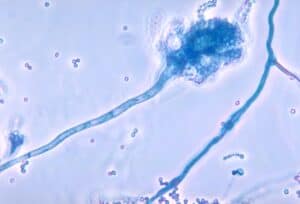Do you suffer from allergies or want to improve your indoor air quality? It’s important to understand the presence of allergens in your home and take steps to reduce exposure. If you’re like most people, you probably spend a significant amount of time indoors, especially during the colder months.
Unfortunately, indoor air can be up to five times more polluted than outdoor air, making it important to understand the quality of the air you breathe in your home. In this post, we’ll walk you through how to interpret your home allergen test results in plain language.
What are home allergen testing kits?
Home allergen testing kits are easy-to-use kits that can detect common allergens in your home, like dust mites, pet dander, and mold. You simply collect a sample of dust from various areas in your home and send it to a lab for analysis.
How to interpret your results
Once you receive your home allergen test results, you’ll see a measurement of the amount of each allergen present in your home, usually in micrograms per gram of dust (μg/g). For example, you may have 10 μg/g of dust mite allergens in your home.
It’s important to keep in mind that any amount of allergens can trigger symptoms in sensitive individuals. The higher the level of allergens present in your home, the more likely you are to experience allergy symptoms
What can you do if your results show elevated levels of allergens?
If your home allergen test results show elevated levels of allergens, don’t worry! There are steps you can take to reduce exposure and improve air quality. Here are some tips:
- Dust regularly: Regularly dusting surfaces, vacuuming carpets, and washing bedding can help reduce the amount of dust and allergens in your home.
- Control humidity: High humidity levels can contribute to mold growth, so it’s important to control moisture in your home. Use a dehumidifier to maintain humidity levels below 50%.
- Consider air purifiers: Air purifiers can help remove allergens from the air and improve air quality. Look for a purifier with a HEPA filter, which can capture tiny particles like pet dander and dust mite allergens.
- Remove allergen sources: If you have a pet allergy, consider finding a new home for your pet or keeping them out of certain areas of your home. If you have a mold allergy, take steps to remove any visible mold growth and address any moisture issues.
Improve Your Home's Air Quality in Virginia Beach and Richmond
Understanding your home allergen test results is an important step in creating a healthier home environment. By interpreting the numbers and taking action to reduce exposure to allergens, you can improve indoor air quality and reduce allergy symptoms.
If you’re concerned about your indoor air quality, Air Quality Inc. is here to help. Contact us today to schedule an appointment. We serve the Virginia Beach and Richmond areas and are committed to helping you breathe cleaner, healthier air.




